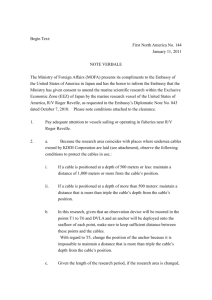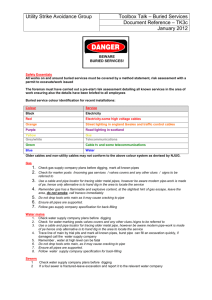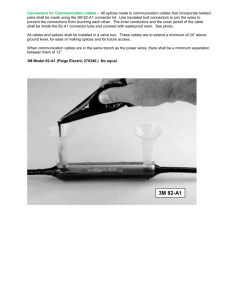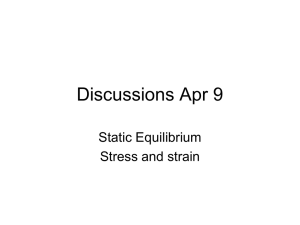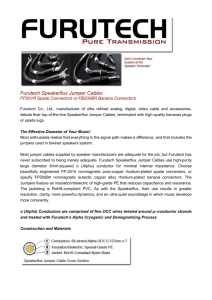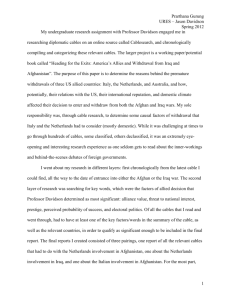07-12 - IEEE 802 LAN/MAN Standards Committee
advertisement
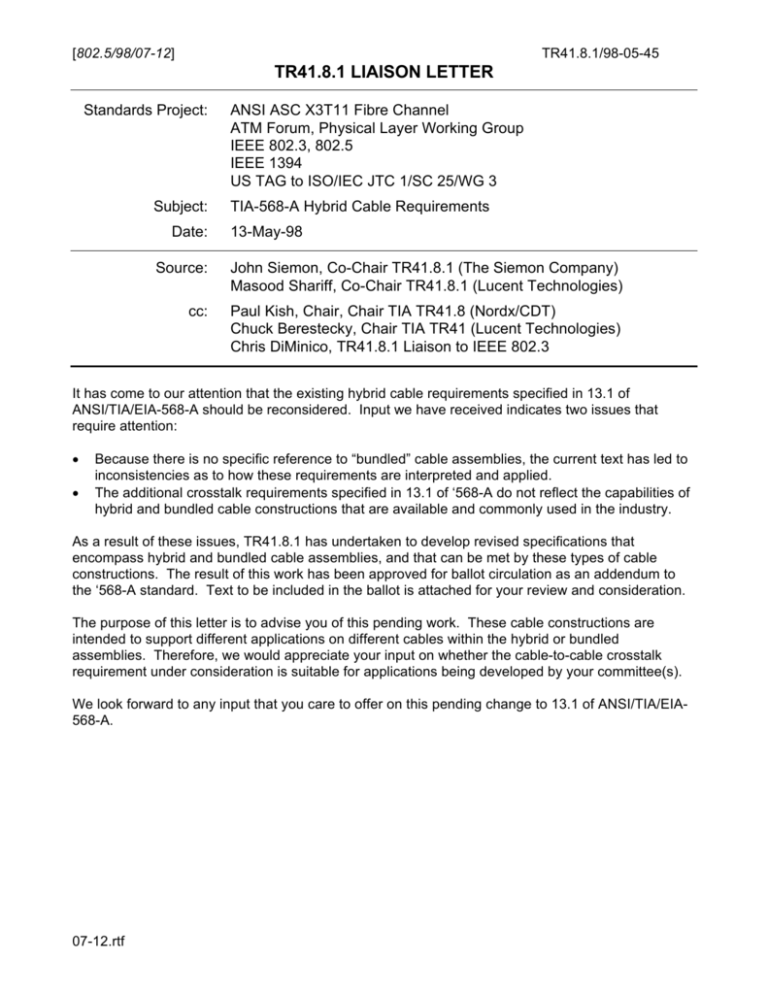
[802.5/98/07-12] TR41.8.1/98-05-45 TR41.8.1 LIAISON LETTER Standards Project: Subject: Date: ANSI ASC X3T11 Fibre Channel ATM Forum, Physical Layer Working Group IEEE 802.3, 802.5 IEEE 1394 US TAG to ISO/IEC JTC 1/SC 25/WG 3 TIA-568-A Hybrid Cable Requirements 13-May-98 Source: John Siemon, Co-Chair TR41.8.1 (The Siemon Company) Masood Shariff, Co-Chair TR41.8.1 (Lucent Technologies) cc: Paul Kish, Chair, Chair TIA TR41.8 (Nordx/CDT) Chuck Berestecky, Chair TIA TR41 (Lucent Technologies) Chris DiMinico, TR41.8.1 Liaison to IEEE 802.3 It has come to our attention that the existing hybrid cable requirements specified in 13.1 of ANSI/TIA/EIA-568-A should be reconsidered. Input we have received indicates two issues that require attention: • • Because there is no specific reference to “bundled” cable assemblies, the current text has led to inconsistencies as to how these requirements are interpreted and applied. The additional crosstalk requirements specified in 13.1 of ‘568-A do not reflect the capabilities of hybrid and bundled cable constructions that are available and commonly used in the industry. As a result of these issues, TR41.8.1 has undertaken to develop revised specifications that encompass hybrid and bundled cable assemblies, and that can be met by these types of cable constructions. The result of this work has been approved for ballot circulation as an addendum to the ‘568-A standard. Text to be included in the ballot is attached for your review and consideration. The purpose of this letter is to advise you of this pending work. These cable constructions are intended to support different applications on different cables within the hybrid or bundled assemblies. Therefore, we would appreciate your input on whether the cable-to-cable crosstalk requirement under consideration is suitable for applications being developed by your committee(s). We look forward to any input that you care to offer on this pending change to 13.1 of ANSI/TIA/EIA568-A. 07-12.rtf 13-May-98 ANSI/TIA/EIA-568-A Addendum No. 3 Purpose The purpose of this Addendum is to revise 13.1 of ANSI/TIA/EIA-568-A. These revisions are identified in the following text with change marks. Proposed change: 13.1 Bundled and Hybrid Cables Bundled and hybrid cables may be used for horizontal cabling provided that each recognized cable type (see 4.4) meets the transmission and color-code specifications for that cable type given in sections 10, 11, and 12. Additionally, power sum NEXT loss between all non-fiber recognized cable types shall be 3 dB better than the specified pair-to-pair NEXT loss of each recognized cable type at all of the specified frequencies (or ranges). Calculated power sum values that are greater than 65 dB shall not be used to determine power sum compliance. NOTES: 1 Hybrid UTP cables (color coded per 10.2) can be distinguished from multipair UTP backbone cables (color coded per 10.3) and by the transmission performance. 2 Hybrid cables consisting of optical fiber and copper conductors are sometimes referred to as composite cables. The individual cables within a bundled cable shall meet the applicable requirements in sections 10, 11 and 12 after bundle formation. Definitions Hybrid cable: an assembly of two or more cables (of the same or different types or categories) covered by one overall sheath. Bundled cable: an assembly of two or more cables bound together to form a single unit prior to installation, sometimes referred to as composite, loomed, speed-wrap, cable-tie, or whip cable constructions. Rationale for this Change: 1. Modeling and measurements indicate that the external cable crosstalk is best determined by power-sum addition of the external cross-talk noise. 2. Bundled cables were found to demonstrate similar external crosstalk noise characteristics as hybrid cables and are consequently covered by the same requirements. Purpose The purpose of this Addendum is to revise 13.1 of ANSI/TIA/EIA-568-A. These revisions are identified in the following text with change marks. 13-May-98 ANSI/TIA/EIA-568-A Addendum No. 3 Proposed change: 13.1 Bundled and Hybrid Cables Bundled and hybrid cables may be used for horizontal cabling provided that each recognized cable type (see 4.4) meets the transmission and color-code specifications for that cable type given in sections 10, 11, and 12. Additionally, power sum NEXT loss between all non-fiber recognized cable types shall be 3 dB better than the specified pair-to-pair NEXT loss of each recognized cable type at all of the specified frequencies (or ranges). Calculated power sum values that are greater than 65 dB shall not be used to determine power sum compliance. NOTES: 1 Hybrid UTP cables (color coded per 10.2) can be distinguished from multipair UTP backbone cables (color coded per 10.3) and by the transmission performance. 2 Hybrid cables consisting of optical fiber and copper conductors are sometimes referred to as composite cables. The individual cables within a bundled cable shall meet the applicable requirements in sections 10, 11 and 12 after bundle formation. Definitions Hybrid cable: an assembly of two or more cables (of the same or different types or categories) covered by one overall sheath. Bundled cable: an assembly of two or more cables bound together to form a single unit prior to installation. Examples of terms that are used for bundled cable assemblies that are considered to fall within this definition include “composite”, “loomed”, “zip-cord”, “speed-wrap”, “cable-tie” and “whip” cable constructions. Rationale for this Change: 1. Modeling and measurements indicate that the external cable crosstalk is best determined by power-sum addition of the external cross-talk noise. 2. Bundled cables were found to demonstrate similar external crosstalk noise characteristics as hybrid cables and are consequently covered by the same requirements.
